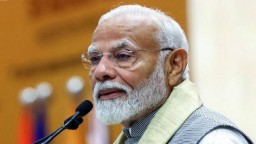Latest News
DYNAMICS OF FISCAL FEDERALISM IN INDIA

Industrial alcohol – Interplay of regulating Entries
It is important to look into the interplay of regulating entries of the Seventh Schedule: i) industries, the control of which by the Union is declared by Parliament by law to be expedient in the public interest (Entry 52 of the Union List); ii) duties of excise on tobacco, medicinal and toilet preparations containing alcohol, opium, Indian hemp, narcotic drugs narcotics and other goods manufactured or produced in India except alcoholic liquors for human consumption (Entry 84 of the Union List); iii) intoxicating liquors, i.e. the production, manufacture, possession, transport, purchase and sale of intoxicating liquors (Entry 8 of the State List); and iv) duties of excise on alcoholic liquors for human consumption, opium, Indian hemp, narcotic drugs and narcotics manufactured or produced in the state and countervailing duties at the same or lower rates on similar goods manufactured or produced elsewhere in India but excluding medicinal and toilet preparations containing alcohol, opium, Indian hemp, narcotic drugs and narcotics (Entry 51of the State List).
The conundrum
Apparently, there is a complete overlap of jurisdiction of Centre and states in regard to alcohol. Interestingly, there is no mention of “industrial alcohol” in any entry in the three lists – central, state and concurrent. But at the crux is the power to control revenue-rich liquor industry.
Case for the States
States maintain that extra neutral alcohol (ENA), over which states have exclusive regulatory powers, is the “mother raw material” for potable liquor and denatured spirits. Ethyl alcohol becomes industrial alcohol after denaturation and most of the processes for manufacture of denatured spirits are the same as potable alcohol. If states decide at this stage that no raw material would be diverted for manufacturing industrial alcohol, then ENA would be used only for potable liquor. Thus, states should alone have exclusive regulatory control over industrial alcohol. States assert that intoxicating liquor means every kind of alcohol, whether for human consumption or industrial use. Further, that when an exhaustive Entry 8 of the State List constitutionally puts the subject under the purview of the states, central government’s role should be ousted. States affirm that the centre cannot denude the overarching control vested in the states over liquor industry by virtue of an exception under Entry 52 of the State List.
Case against the States
A conjoint reading of regulating entries in central, state and concurrent lists of the Constitution, projects that states have jurisdiction over liquors consumable by humans for intoxication. All other variants, including industrial alcohol, come under central domain. The litmus test for Entry 8 is the human factor introduced by the Constitution framers by specifying liquor’s intoxicating effect. That which is not consumable by humans will not fall within the meaning of intoxicating. Notwithstanding the long history of definitions of “liquor” to include liquids with alcohol content, it cannot be canvassed that human consumption part can be kept aside. Non-potable alcohol, including denatured spirits or industrial alcohol, will be unfit for human consumption, whereas Entry 8 of the State List refers only to liquors for human consumption. In addition, Entry 52 of the Union List is untrammelled by any other liquor regulating entry in State List. It has authorised the Parliament to exercise comprehensive regulatory control over liquor industry, extending to its trade, commerce, supply and sale, through legislation in public interest, except those which manufactured potable alcohol.
The Way Out
Dr Kenneth Clinton Wheare – father of the contemporary federal theories - says that the union and regional governments must each have under its control financial resources sufficient to perform its executive functions. But the distribution of revenues in India flies directly in the face of the classical federal traditions. In the Constituent Assembly, little importance was attached to the adage that “he who pays piper calls the tune.” Representatives of the states called for increased revenues, more out of pride that the states might meet their responsibilities than aiming for states’ fiscal autonomy. Alladi Krishnaswami Ayyar told the Constituent Assembly (CAD VII 336) that there is a tendency in several federation for the central government to act as the taxing agency and to share proceeds of the taxes with the units.
Despite the successful working of the financial provisions of the Constitution, the relationship between the Union and the states continues to be a subject of controversy, so much so, that CMs of Karnataka, Kerala and Tamil Nadu recently held demonstrations in New Delhi in February this year. These states claimed that the current system for distributing resources among states is disadvantageous to the southern states as compared to the northern states with larger populations. In a research by Takshshila Institution, it was found that in 2018-2019, the states generated 37.3% of the revenue and incurred 62.4% of the expenditures. Over the years, Union Finance Commissions have played a pivot role in assessing these fiscal imbalances between the Union and the states and proposed objective sharing mechanisms. However, states’ share in Union’s gross tax revenue has not risen, despite 10% surge in the revenue sharing formula during 2010-2020. Moreover, the introduction of GST has also hit states’ thin financial autonomy.
Larger tax transference. Including cesses and surcharges in the kitty
The 14th Finance Commission proposed that tax devolution to the states should be 42% of the divisible pool – which includes all taxes collected by the Union but excludes tax revenue of union territories, cesses and surcharges levied by the Union. Unfortunately, 15th Finance Commission has reduced the tax transference and pegged it to 41%. Also, Union’s gross tax revenue has seen a downturn. If the divisible pool contracts, all states’ share also diminishes. Importantly, cesses and surcharges are not a part of the divisible pool. The states, in addition to asking for a larger share of the divisible pool from existing 41%, should also claim that cesses and surcharges should be part of the divisible kitty. In this manner their share will automatically increase. States should also plead with the Union Government to rationalise tax slabs instead of levying cesses and surcharges. The states may challenge the constitutionality of cesses and surcharges because they violate fiscal federalism – a basic feature of the constitution. (Concluded)
THE VIEWS EXPRESSED BY THE AUTHOR ARE PERSONAL
Shrawan Sawhney The writer is a retired IAS officer












.png)
.png)

.png)
.png)


.png)
